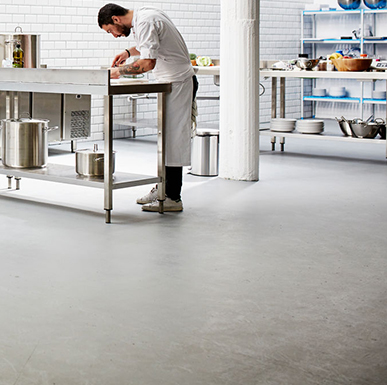Technical Bulletin No. 2
The selection of the most appropriate Metz product for an application is dependent on a number of factors. One of the major factors is the resistance of the product to the chemicals with which it will come into contact. This not only includes resistance to the chemicals involved in the process, but also those used for cleaning. Sometimes the cleaning chemicals used can be more aggressive than the chemicals in the process, and can also be used more frequently.
The attached chart shows where Metz products fit in the pH scale. The pH is the measure of the acidity or alkalinity of a material. pH ranges between 0 and 14. A material with a pH of 7 (pure water) is classified as neutral. An acid is a substance with a pH below 7, with stronger acids having a lower pH. An alkali (base) is a substance with a pH above 7, with stronger alkalis having a higher pH.
The attached chart lists Metz products in groups, according to chemical composition, together with some common chemicals and foodstuffs. The lighter shaded sections refer to ranges where the product may be suitable, depending on the chemical and the amount of exposure.
Referring to the chart, it can be seen why uncoated Portland cement concrete is not used as a floor in food and chemical plants. Almost all foodstuffs are acidic and so will corrode concrete over time. The stronger acids found in concentrated chemical areas can in fact dissolve Portland cement concrete whilst you watch.
Many cleaning compounds are either strongly alkaline or acidic and can also attack concrete, so understanding the full chemical exposure for a material is critical.
Of course concrete is also not used because of its porosity, which allows ingress of chemicals and can also promote growth of bacteria.
Note that the chart is a guide only and cannot be used for specification. For example, although Metz 5NF is resistant to most inorganic acids (hydrochloric, sulphuric, phosphoric etc.) down to a pH of almost 0, it is not resistant to concentrated organic acids (acetic, lactic). This chart also does not include solvents, which can attack many products.
Similarly, demineralised water with a pH of 7.0 will attack very aggressively Portland cement based concretes.
It is also important to differentiate between continuous and intermittent exposure. For example Metz 93PU would not be resistant to full immersion in high concentrations of sulphuric acids for long periods, but may be suitable for intermittent splash and spillage.
It is important to obtain a full list of chemicals, their concentrations and temperatures in any application. This must always include the cleaning compounds used.
A good illustration for the need to know the cleaning compounds used is when considering the potassium silicate products. They are resistant to all acids, except those containing fluorine, down to pH 0. However, they have very limited resistance to alkalis (pH greater than 7). As many cleaning compounds are strongly alkaline (pH above 9), they will attack potassium silicate products.
There are other factors that must be considered when deciding on a product such as:
i) Physical stresses – traffic, abrasion, imposed loads
ii) Substrates – type, age, condition
iii) Site conditions (temperature extremes, covered or uncovered)
iv) Time after application before installation is put into service (that is, available curing time for system)
v) Special requirements – e.g. slip resistance, ease of cleaning, aesthetic requirements
vi) Cost
In some cases, a single system cannot fulfill all requirements. In these instances a system may be selected which offers the best balance of properties.
Metz Recommendation:
Determine all conditions the materials will be exposed to during installation and over their lifespan. Refer to the individual technical data sheets and the Metz Chemical Resistance Chart for further information. If there are any doubts about an application, don’t hesitate to ask for advice.
Notes on below Chart:
1. Bis A refers to Bisphenol A. Bisphenol A is the standard epoxy resin. The properties of the Bis A system are governed by the hardener used. For example, Metz 19 hardener imparts water washability but results in lower chemical resistance than Metz 5NF. Epoxy Novolac resins impart higher chemical and heat resistance to systems, as they provide more branches for crosslinking.
2. pH values for foodstuffs are from Oregon State University Food Resources. Web site: orst.edu/food-resource/pH/acid.html which also gives explanation of pH.
3. The pH scale is logarithmic. Therefore a solution with a pH 1 is 10 times stronger than that with a pH of 2.


